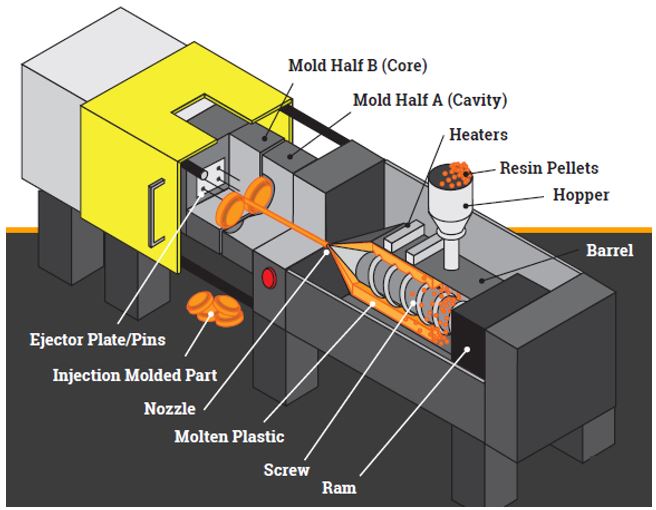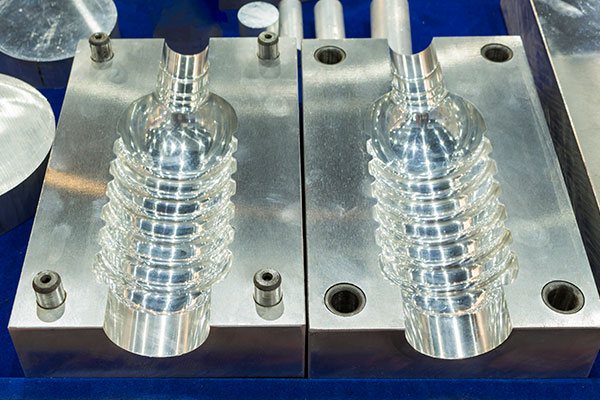Comprehending the Plastic Injection Molding Process for High-Quality Production
Comprehending the Plastic Injection Molding Process for High-Quality Production
Blog Article
Recognizing the Basics of Plastic Shot Molding Processes
Plastic shot molding works as a foundation of modern-day manufacturing, supplying a methodical method to creating complex elements with accuracy. This procedure not only encompasses the fundamental actions of melting and injecting materials right into mold and mildews however likewise involves a nuanced understanding of different influencing variables, such as temperature level and pressure. As sectors significantly demand performance and high quality, the intricacies of this methodology end up being a lot more critical. Discovering these necessary elements might reveal how even small adjustments can bring about considerable improvements in manufacturing results, elevating concerns regarding the possibility for technology in this well established process.
What Is Plastic Shot Molding?
Plastic injection molding is a commonly made use of manufacturing process that changes thermoplastic and thermosetting products right into precise and complex shapes. This technique is preferred for its capability to generate high quantities of identical components with remarkable accuracy, making it a crucial method in various sectors, including automobile, durable goods, and medical tools.
The process entails thawing the picked plastic material and infusing it right into a mold and mildew under high pressure. The mold and mildew, developed to the specifications of the desired component, allows the molten plastic to form as it cools and solidifies. When the material has set, the mold and mildew is opened up, and the ended up element is expelled.
Plastic shot molding offers a number of advantages, including decreased waste, consistency in production, and the ability to include intricate styles that may be testing with various other manufacturing techniques. Additionally, it supports a broad series of materials, each offering special residential or commercial properties that can be tailored for details applications. As markets remain to innovate, plastic shot molding continues to be at the forefront, allowing the advancement of innovative products that fulfill advancing consumer needs.
The Injection Molding Refine
The shot molding process is an advanced strategy that includes numerous key stages to generate top notch plastic elements. Plastic pellets are fed right into a heated barrel where they are melted right into a viscous liquid. This molten plastic is then injected under high pressure into a precision-engineered mold, which forms the material right into the wanted type.
Once the mold is loaded, the plastic is enabled to solidify and cool, taking the form of the mold and mildew dental caries. Cooling time is crucial, as it influences the cycle time and the final residential properties of the molded component. After enough air conditioning, the mold and mildew opens up, and the ended up element is ejected utilizing ejector pins.

Products Made Use Of in Shot Molding
Different products can be used in the shot molding procedure, each offering special properties that satisfy particular applications. One of the most typically used products include thermoplastics, thermosetting plastics, and elastomers.

Thermosetting plastics, like epoxy and phenolic materials, go through a chemical modification throughout the healing process, causing a stiff, inflexible framework. These products are perfect for applications needing high heat resistance and architectural stability, commonly utilized in electric insulators and automotive components.
Elastomers, consisting of silicone and rubber-based products, provide versatility and durability. Their special homes click here for more info make them suitable for applications that require elasticity, such as gaskets and seals.
Additionally, specialty products like bio-based plastics and compounds are getting grip for their environmental advantages and enhanced efficiency qualities, widening the range of injection molding applications in different industries. Comprehending the residential or commercial properties of these products is important for selecting the proper kind for details tasks.
Benefits of Shot Molding
Shot molding stands out as a highly reliable production process that offers numerous benefits for creating complex get rid of accuracy. Among one of the most considerable advantages is the capacity to produce complex layouts that would be difficult or impossible to achieve with various other approaches (Plastic Injection Molding). The procedure permits tight resistances and in-depth features, ensuring high-quality Get the facts components
In addition, shot molding is recognized for its rapid production capacities, making it an excellent option for high-volume production. Once the mold is produced, components can be generated rapidly, lowering preparations and enhancing general productivity. This efficiency not just lowers manufacturing expenses yet additionally supplies an one-upmanship on the market.
The convenience of products made use of in injection molding further boosts its allure. A vast array of thermoplastics and thermosetting polymers can be employed, allowing makers to pick products that ideal meet their particular needs, consisting of adaptability, heat, and toughness resistance.
Furthermore, the process decreases waste, as excess product can commonly be recycled and reused. This sustainability element contributes to a lowered environmental impact, making injection molding a liable production selection. Overall, the benefits of shot molding make it a recommended approach for numerous sectors.
Elements Impacting Product Top Quality
While countless factors can influence product quality in shot molding, recognizing these aspects is critical for attaining optimum results. Secret elements include product selection, processing parameters, and mold design.
Material choice plays an important function, as various polymers show distinct residential properties that affect flowability, toughness, and thermal security. Poor product option can lead to problems such as bending or incomplete filling.
Handling criteria, consisting of temperature level, cycle, and pressure time, have to be meticulously regulated. Variants in these setups can result in incongruities in part dimensions and surface coating. Excessively high temperature levels may create destruction of the polymer, while poor stress can result in brief shots.
Mold and mildew design is similarly important, as it establishes the flow of the molten plastic and the cooling procedure. Poorly developed mold and mildews might bring about unequal cooling rates, leading to dimensional mistakes and residual stresses.

Final Thought
To conclude, plastic injection molding acts as a crucial production process that makes it possible for the efficient production of high-grade parts. Mastery of the shot molding process, consisting of the understanding of materials and the influence of various aspects on product high quality, is crucial for accomplishing optimum outcomes. The benefits of this method, such as cost-effectiveness and design adaptability, further emphasize its value throughout multiple markets, solidifying its standing as a recommended choice company website for high-volume production.
Plastic shot molding offers as a keystone of contemporary production, supplying a systematic technique to producing complicated elements with accuracy.Plastic shot molding supplies numerous advantages, including minimized waste, consistency in manufacturing, and the capability to incorporate detailed designs that may be challenging with other manufacturing methods (Plastic Injection Molding). As industries proceed to innovate, plastic injection molding stays at the leading edge, allowing the advancement of advanced items that satisfy developing customer needs
The injection molding process is a sophisticated technique that involves several vital phases to create top notch plastic parts.In verdict, plastic injection molding offers as an important manufacturing process that makes it possible for the effective manufacturing of high-quality elements.
Report this page